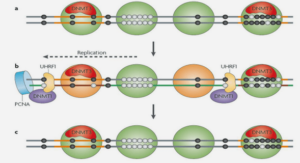A Simple and Efficient Green Method for the Deprotection of N-Boc in Various Structurally Diverse Amines
Introduction
The development of a simple and effective method, using an environmentally friendly approach as well as an economical process is in great demand in protective group chemistry. The introduction and removal of protecting groups has great significance in organic synthesis (Wuts & Greene, 2007). The development of protecting groups and the study of its consequent deprotection is a field of interest, often unavoidable need in the synthesis of complex molecular structures. The tert-butyloxycarbonyl (Boc) is still one of the most widely used in organic chemistry, used to protect primary or secondary amines as well as amino acids in peptides chemistry (Bodansky & Bodansky, 1994). The stability of N-Boc to catalytic hydrogenation and its resistance towards basic and nucleophilic attacks make Boc and other protecting groups (Bn, Fmoc and CBz) ideal orthogonal partners for the protection of amines during the synthesis of multifunctional targets (Agami et al., 2002; Lutz et al., 1998). Traditional methods for Boc-protection involve the reaction of amines with di-tert-butyl dicarbonate (Boc)2O in the presence of 4-(N,N-dimethylamino) pyridine (DMAP) (Basel et al., 2000) or inorganic bases (Handy et al., 2004). In the point of view, several strategies for the N-Boc deprotection have been developed these past years. A variety of reagents have been employed to effect this transformation, including strong acids, Lewis acids, and neutral conditions assisted by microware. N-Boc deprotection has been successful using mild acidic conditions (Wuts & Greene, 2007) such as trifluoacetic acid (TFA) in CH2Cl2, HCl in EtOAc, H2SO4 in t-BuOAc, TsOH and MsOH in t-BuOAc-CH2Cl2, aqueous phosphoric acid in THF (Li et al., 2003), or with Lewis acids such as BF3 . OEt2, TMSI, TMSOTf, TiCl4, SnCl4, AlCl3, Sn(OTf)2 and ZnBr2 (Wuts & Greene, 2007; Bose et al., 2003). Montmorillonite K10 clay catalyst (Shaikh et al., 2000) and silica gel (under low pressure) (Applquist et al., 1996) or thermolytic conditions at high temperature (150 o C) (Rawal et al., 1987; Klai et al., 2004) have also shown to work. Cleavage of the Boc group can also be achieved in some cases under basic conditions, where the amine is highly activated, such as a pyrrole (Hasan et al., 1981; El Kazouli et al., 2006; Tom et al., 2004). Recently, microware-assisted N-Boc deprotection under mild basic conditions using K3PO4·H2O in CH3OH has been reported (Dandepally et al., 2009). However, many of these methods present disadvantages such as high acidity, the use of expensive reagents and more excessive amounts of catalysts and organic solvents, low www.ccsenet.org/ijc International Journal of Chemistry Vol. chemoselectivity as well as high temperatures. In addition, some of these catalysts cannot be recovered and used again. In recent years, organic reactions in water have received considerable attention. Compared to conventional solvents, water is preferred for organic reactions because of its unique properties. Moreover, it is cheap, non-toxic, non-explosive, and environmentally acceptable. Thus, the use of water over organic solvents in deprotection reactions has gained much importance in the area of sustainable development chemistry (Crieco, 1998; Li & Chang, 1997). However, reports for using of water as catalyst to promote organic reactions are very limited. Wang et al. (2009) reported special and efficient “green”, catalyst- free, N-Boc deprotection in subcritical water, under pressure. Both aromatic and aliphatic N-Boc amines can be converted to the corresponding amines in high yields. The experiments were carried out with various time intervals (1-6 h), using distilled, deionized water (20 mL/mmol) at 150 o C. More recently, Thajudeen et al. (2010) described l-proline-based cyclic dipeptides from N-Boc-protected methyl esters under catalyst free conditions using water as a solvent. One-pot deprotection followed by cyclization has been used as the key steps. Based on these works, we’ve explored the deprotection of the Boc group using a catalyst-free water-mediator in the absence of any additional reagent under normal pressure, predicting chemoselectivity toward acid labile protecting group as methyl ester.
Results and Discussion
For the initial study of the deprotection, we chose aromatic and aliphatic N-Boc amine derivatives since many of these substrates are either commercially available or easily accessible. A series of N-Boc amines were subject to the deprotection conditions in water at 100 o C (Scheme 1). The results are established in Table 1. N-Boc deprotection was achieved in one single step by using deionized water under argon atmosphere. R’ N-Boc R R’ NH R Water 100 °C 1-5 1a-5a Scheme 1. Deprotection of the Boc group in diverse amines As seen by the results from Table 1, the isolated yields of 1a-6a are in between 90 and 97 % and the reactions completed after within 12 minutes. A comparative observation can be made with Wang et al. (2009) who heated to a temperature of 150 o C under pressure for the deprotection of N-Boc amines, whereas only 100 o C was needed for our approach and delivering excellent yields. We noticed that the Benzyl orthogonal group was conserved in the case of 6a. 5 Encouraged by these excellent preliminary results, we attempted the deprotection with a series of cyclosulfamides containing two orthogonal protecting groups a Benzyl and a Boc. Bn-N S N-Boc O O R Bn-N S NH O O R Water 100 °C 7-11 7a-11a Scheme 2. Deprotection of the Boc group in N-Boc, N’-Bn- cyclosulfamides Using a typical procedure, N-Boc, N’-Bn cyclosulfamides (7-11) were dissolved in water and treated by increasing the temperature until reaching boiling point. Reaction progress was monitored by TLC, which showed complete transformations of 7-11 within 12 min at 100 o C, giving the corresponding deprotected N-H, N’-Bn cyclosulfamides 7a-11a in yields ranging from 90 % to 96 % (Scheme 2, Table 2). In every experiment, the benzyl group was preserved. The N-Boc, N’-Bn cyclosulfamides 7-11 syntheses were achieved starting from chlorosulfonyl isocyanate (CSI), tert-butanol and natural amino acids (Gly, Ala, Val, Leu, Phe), following the general procedure previously described (Régaïnia et al., 2000; Berredjem et al., 2003). Table 2. Deprotection of N-Boc cyclosulfamidesa To scope the limitations of this reaction, we extended our study to the Boc-deprotection of various linear N-Boc carboxylsulfamides amino acid derivatives (Scheme 3). All N-protected compounds (12-16) were prepared by our team starting from amino acids and CSI as described previously (Aouf et al., 1991). The results of these experiments are summarized in Table 3, and show that the Boc cleavage was successful for all of the substrates giving the corresponding N-deprotected carboxylsulfamides in high yields ranging from 92 to 96 % within 10 minutes. Surprisingly, we did not observe the deprotection of the ester group, and the selectivity of the deprotection was confirmed by 1 H NMR, by the presence of a methyl ester group signal at 3.70 ppm. This could be considered advancement over the reported methods (Wang & Li., 2009; Wang et al., 2009) for N-Boc deprotection and can be avoid predicting that water molecule act as dual acid/base catalyst in height temperature.






